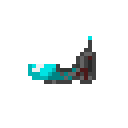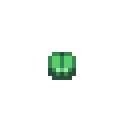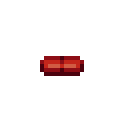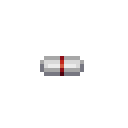Difference between revisions of "Guide to Medical"
Shadeykins (talk | contribs) |
Shadeykins (talk | contribs) |
||
| Line 176: | Line 176: | ||
After you've used the Defibrillator you'll receive one of three messages. | After you've used the Defibrillator you'll receive one of three messages. | ||
<font color=blue>Success!</font> This means the patient is now alive. | <b><font color=blue>Success!</font></b> This means the patient is now alive. | ||
<font color=blue>The defibrillation was unsuccessful.</font> This means the patient is not presently in their body. | <b><font color=blue>The defibrillation was unsuccessful.</font></b> This means the patient is not presently in their body. | ||
<font color=darkblue>The heart tissue is damaged beyond the point of revival.</font> This you waited too long for defibrillation. | <b><font color=darkblue>The heart tissue is damaged beyond the point of revival.</font></b> This you waited too long for defibrillation. | ||
Defibrillators are a time sensitive device, and if the person has been dead for more than three minutes they won't work! | Defibrillators are a time sensitive device, and if the person has been dead for more than three minutes they won't work! | ||
Revision as of 03:58, 28 September 2015
=A Guide to Medical=
THIS IS VERY MUCH A WORK IN PROGRESS, PLEASE REFER TO THE "Guide to Medicine" FOR THE MOMENT.
So you want to be a doctor? Well there's a few things you should know about working in the medical department first!
This guide will cover everything regarding basic medical procedures, for surgery or cloning see the Guide to Surgery or Guide to Genetics
Tools of the Trade
There's a plethora of equipment available to any aspiring doctor, most of which can be found in the NanoMed dispenser. 
 - A pair of latex gloves, lowers infection chances when performing surgery and handling patients.
- A pair of latex gloves, lowers infection chances when performing surgery and handling patients. - A sterile mask, lowers infection chances when performing surgery and provides mild protection against airborne viruses.
- A sterile mask, lowers infection chances when performing surgery and provides mild protection against airborne viruses. - A medical belt, it can store almost any small medical item such as trauma kits, syringes, or beakers.
- A medical belt, it can store almost any small medical item such as trauma kits, syringes, or beakers. - A standard issue medical HUD. This will allow you to immediately infer how injured someone is.
- A standard issue medical HUD. This will allow you to immediately infer how injured someone is. - An advanced trauma kit, used for any form of physical injury.
- An advanced trauma kit, used for any form of physical injury. - A burn kit that can double as a trauma kit in a pinch, specialized for burns.
- A burn kit that can double as a trauma kit in a pinch, specialized for burns. - The bread and butter of the medbay, gives detailed information on injuries. It's suggested you also get the upgrade
- The bread and butter of the medbay, gives detailed information on injuries. It's suggested you also get the upgrade  at the NanoMed.
at the NanoMed. - A syringe, or sharp. Can take blood samples, or be filled with reagents and used manually or fired by a syringe gun.
- A syringe, or sharp. Can take blood samples, or be filled with reagents and used manually or fired by a syringe gun. - A roller bed, used for moving patients with broken bones to prevent further injury.
- A roller bed, used for moving patients with broken bones to prevent further injury. - A set of medical splints, can be used on on broken limbs to prevent further injury.
- A set of medical splints, can be used on on broken limbs to prevent further injury.- File:Stasisbag.png - A stasis bag, it will immediately stabilize any person as long as they're in the bag. Can also be ID-locked.
- File:Defrib.png - A defibrillator, used for reviving recently deceased patients.
- File:Crewmonitor.png - A handheld version of the crew monitor computer, lets you see everyone's suit sensors on the fly.
A Breakdown of Basic Chemicals
Whilst working in the medbay there is a wide variety of chemicals you might encounter.
While this doesn't cover nearly all the chemicals, it's a good primer on chems you'll frequently encounter and need.
 Charcoal - Charcoal slowly purges all other reagents from the bloodstream, and also heals toxin damage.
Charcoal - Charcoal slowly purges all other reagents from the bloodstream, and also heals toxin damage. Salbutamol - Salbutamol slowly fixes oxygen damage, and will temporarily halt oxyloss.
Salbutamol - Salbutamol slowly fixes oxygen damage, and will temporarily halt oxyloss. Salicylic Acid - Salicylic Acid slowly heals brute injuries, but only if the patient has less than 50 brute damage.
Salicylic Acid - Salicylic Acid slowly heals brute injuries, but only if the patient has less than 50 brute damage. Styptic Powder - Styptic Powder will heal any brute injuries, it's toxic if it's not in patch form.
Styptic Powder - Styptic Powder will heal any brute injuries, it's toxic if it's not in patch form. Silver Sulfidiazine - Silver Sulfidiazine will heal any burn injuries, it's toxic if it's not in patch form.
Silver Sulfidiazine - Silver Sulfidiazine will heal any burn injuries, it's toxic if it's not in patch form. Synthflesh - Synthflesh can be used to treat both brute and burn injuries.
Synthflesh - Synthflesh can be used to treat both brute and burn injuries. Epinephrine - Present in all autoinjectors. Stabilizes critical patients and slowly heals them.
Epinephrine - Present in all autoinjectors. Stabilizes critical patients and slowly heals them. Ether - Ether will eventually knock a person out - typically only effective in doses above 30u.
Ether - Ether will eventually knock a person out - typically only effective in doses above 30u. Morphine - Morphine will allow a patient to temporarily ignore pain, but can also induce unconsciousness.
Morphine - Morphine will allow a patient to temporarily ignore pain, but can also induce unconsciousness. Mannitol - Mannitol is used for brain damage, most often for the recently cloned.
Mannitol - Mannitol is used for brain damage, most often for the recently cloned. Mutadone - Mutadone will cure almost all genetic defects, as well as powers.
Mutadone - Mutadone will cure almost all genetic defects, as well as powers.- File:Beakercryox.png Cryoxadone - Cryoxadone is used in cryotubes, and heals toxin, oxygen, brute, burn and cloning damage.
- File:Perfluopill.png Perfluodecalin - Perfluodecalin will rapidly heal oxygen damage and oxyloss, but will also temporarily mute the patient.
- File:Penteticpill.png Pentetic Acid - Pentetic Acid rapidly purges all chemicals, and quickly heals toxins damage while dealing minor brute and burn damage.
- File:Mitocholidepill.png Mitocholide - Mitocholide heals damage to internal organs, and can even fix ruptured lungs. Works very slowly.
 Oculine - Repairs eye damage, unless retinal detachment is present or it's genetic.
Oculine - Repairs eye damage, unless retinal detachment is present or it's genetic.
Damage Types and Basic Treatments
Most damage will fall under four major categories: Suffocation, Toxin, Brute, and Burn. These will show up on the Health Analyzer and in low amounts are very easily treated. There are also treatment kits for each of these categories located within medical storage.
This shows up as a BLUE number on the Health Analyzer and Crew Monitoring Console
Suffocation results from being in areas with low oxygen, low blood count, or from the patient being in a critcal state.
- If damage comes from being in a low-oxygen environment, internals or being in an oxygen safe place will slowly heal the patient.
- Salbutamol or Perfluorodecalin will heal the damage. Perfluorodecalin is much more effective but will temporarily mute the patient.
- Epinephrine will slow progress of suffocation damage in critcal patients.
- CPR will also slow progress of suffocation in critical patients. (On help intent, click on the patient with nothing in your hands to administer CPR).
This shows up as a GREEN number on the Health Analyzer and Crew Monitoring Console
Toxin damage sometimes causes vomiting. Getting a blood sample of the patient with a syringe and using a Mass Spectrometer will reveal what toxins are located in the patient's blood. Radiation will also cause Toxin damage.
- Administer Charcoal.
- Monitor the patient's vitals for any changes. Some poisons are tricky and stay in the system for a long period of time.
- In extreme cases, put patient into cryosleep. Less effective than charcoal, but only way to treat critical patients.
Brute Damage File:Brutekit.png
This shows up as a RED number on the Health Analyzer and Crew Monitoring Console
Brute damage is caused by anything that can beat up a person, cut them, or fill them full of lead. It is often paired with broken bones and internal bleeding.
- Locate the injuries using a Health Analyzer.
- Apply Gauze or a Trauma Kit.
- More extreme injuries, or brute damage located in multiple areas, will require the administration of Styptic Powder. Always bandage locations that show up as bleeding to prevent blood loss.
- Robotic limbs damage cannot be treated by the standard equipment located in Medbay. Those patients should be sent to the Roboticist for repairs.
Burn Damage File:Firekit.png
This shows up as a ORANGE number on the Health Analyzer and Crew Monitoring Console
Burn damage can result from fire, electrocution, energy weapons, or exposure to extreme cold.
- Locate the injuries using a Health Analyzer.
- Apply Ointment.
- More extreme injuries, or burns to multiple places of the body will require either Silver Sulfadiazine or Synthflesh medication.
- Synthflesh is the stronger medication and will also heal Brute damage.
- Robotic limbs damage cannot be treated by the standard equipment located in Medbay. Those patients should be sent to the Roboticist for repairs.
Some damage does not show up in any category, but will show that the person is injured
Creatures in the Research and Development location can cause genetics damage when attacking people. Being a new clone can also come with genetics damage, or heavy experimentation with genetics can cause this as well. Fighting on the holodeck will result in holo-damage. Hallucinations brought on by drug use or genetic defects will cause unlisted damage as well.
- Attempt to confirm how injury was received.
- Genetics damage is easily healed with time spent in a cryo chamber.
- Holo-damage is cured by having the patient sleep it off.
- For hallucination damage, treat cause of damage, (a clean SE shot from a geneticist, or charcoal if it's a chemical), and then let patient sleep it off as you would with holo-damage. Sedating the patient for their own safety is highly suggested.
Triage
In situations where there are multiple critical patients being reported or flooding into medbay, use the Triage System. Wearing a Medical HUD will help you spot out which individuals are in the most desperate need of treatment first.
| Color | Description | In-game definition | Real world treatment type | Suggested in-game treatment |
|---|---|---|---|---|
| Black | Patient is dead | Patient is dead | Remove to prevent infections | Ignore until all live patients dealt with, then take to morgue. |
| Red | Patient is seriously injured and in danger of dying |
|
Immediate treatment | Treat their condition as soon as possible. If unable to treat immediately (OR busy, no vaccine), put them to cryosleep. For diseases, inject Spaceacillin to stop progress. |
| Yellow | Patient is severely injured, but not in life danger |
|
Delayed treatment | Treat as soon as no one as all red triage patients are stabilized or put in cryo. |
| Green | Patient has light injuries | Vitals between 30 and 80 | Minimal treatment | Ignore until the last of the yellow triage patients have been taken care of. You should remove people from the cryo cells before attending to these patients. |
| White | Patient is uninjured | Vitals between 80 and 100 | There is no reason to treat them when you have a million more seriously wounded people | Ignore until all green triage patients have been taken care of. |
Defibrillation and YOU!
You've read the guide, you've spent time honing your skills, but your patient still died! What now!?
The Defibrillator is the answer to your prayers!
Defibrillators are a very useful item when used appropriately and correctly, and there are a few steps you should take prior to usage.
- Ensure the patient isn't wearing anything in their exosuit slot.
- Scan the patient to see what damage they have, and have the appropriate treatment ready.
- Ensure the patient doesn't have more than 200 Brute/Burn damage.
- Ensure that you have the means to treat the patient immediately - this generally means cryotubes.
- If the patient has numerous fractures (More than four), it may ultimately be faster to clone them.
- If a patient died from ruptured lungs, have another doctor apply Perfluodecalin while you're using the defibrillator.
- If a patient died from heavy toxins, have another doctor apply Charcoal/Pentetic Acid while you're using the defibrillator.
After you've used the Defibrillator you'll receive one of three messages.
Success! This means the patient is now alive.
The defibrillation was unsuccessful. This means the patient is not presently in their body.
The heart tissue is damaged beyond the point of revival. This you waited too long for defibrillation.
Defibrillators are a time sensitive device, and if the person has been dead for more than three minutes they won't work!
Racial Differences
Depending on the race of the patient in question, specific forms of treatment may prove to be ineffective or even adverse to the health of the patient. Here's a breakdown of all the do's and dont's when it comes to the various species you may encounter during a shift. As Humans, Unathi, Tajaran, Vulpkanin and Kidan are all the exact same in medical terms (and require no special knowledge for treatment) we'll be omitting them from this section of the guide.
Vox 
- Breathe nitrogen, meaning they shouldn't be anesthetized.
- Take toxin damage when breathing oxygen.
- Have a cortical stack implant in the head, keeping them in a "relatively" sane state.
- Can't be cloned.
- While they can be brain-transplanted, the lack of a cortical stack in the new body makes them insane.
- Surgery works normally on Vox.
- Never remove their mask, or nitrogen tank.
- As they can't be cloned or successfully brain-transplanted, Vox should always be top priority for treatment when critical or dead.
Slime People 
- Have no blood, and bleed water.
- Have no pulse.
- Don't need to be anesthetized.
- Can't be cloned. To clone put their slime-core in a new body, and clone the new body.
- Can be brain-transplanted. Simply remove the slime-core and treat it like a brain.
- Don't take organ damage.
- Surgery works normally on Slime People.
- If their limbs become too damaged, they may require amputation and replacement.
Independent Positronic Chassis (IPC) File:IPCSmall.png
- Have no blood.
- Have no pulse.
- Extremely susceptible to EMPs.
- Can't be cloned.
- Can't be brain-transplanted.
- Basic damage can be repaired the same as robotic limbs.
- Surgery does not work normally on IPC's.
- Can't be defribbed.
- Should NEVER be morgued.
- Always bring their body over to robotics if destroyed.
Grey File:GreyMSmall.png
- Take damage from water.
- Suffer no injury from sulphuric acid.
- Surgery works normally on Greys.
Plasma(wo)men File:PlasmamanMSmall.png
- Have no blood.
- Have no pulse.
- Breathe plasma, meaning they shouldn't be anesthetized.
- Will suffocate when breathing oxygen.
- Will combust when exposed to non-plasma environments.
- Suit must be removed before defibrillating. Have a fire extinguisher handy.
- Can be cloned. Have their suit a fire extinguisher, and a defibrillator handy.
- Once they start cloning they'll quickly burn to death. Eject them from the cloner, extinguish the body and then apply a defibrillator. Stick them in a cryotube afterwards.
- Surgery works normally on Plasma(wo)men.
- Never remove their mask, or plasma tank.
- Never remove their suits while alive.


